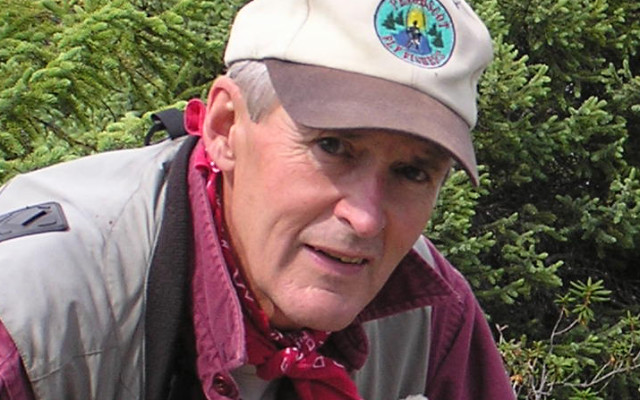
Getting the moose out is hard work
By V. Paul Reynolds
The biggest eye-opener for most first-time moose hunters is after the animal is down. This is when the real work begins. As we all know moose are large critters, very large, and getting a 1,000-pound carcass out of a tangled clear-cut to the nearest accessible road can be a tall order.
During the first few years of Maine’s October moose hunt, before the animals were as wary as they are today, it was common for a hunter to drop his big bull either on a logging road or close by. Not so today. Many of the clear-cuts have grown up and the hunter’s visibility has declined markedly. Moose have gotten smarter, too. A hunter who spends his week heater hunting the roads from his pickup may wind up empty handed at the end of his hunt week. The upshot is that more and more successful moose hunters get their animals some distance from traveled roads back in the woods near a bog, or on an old cutting.
Having been in on a number of Maine moose hunts, including my own, I can attest that there is no perfect answer when it comes to moose retrieval. Some methods are better than others. My best moose hunt and retrieval experience was my own along with moose guide John Richards. We hunted Ross Stream from two canoes, one for me and one big “war” canoe for the guide and, hopefully, a quartered up moose.
At first light on opening day, I dispatched a small bull that I spotted not far from the stream. As luck would have it, the bull dropped beside a small backwater that fed to the main stem of the stream. The water was shallow but we were able to walk the big transport canoe close to the downed moose. We quartered the moose and rolled the sections into the canoe. We righted the meat-laden canoe, tethered it to our hunting canoe and, from that point, let the downstream current do most of the work. Compared with my other “moose extraction” adventures, during which I have heaved, grunted and groaned with the best of them, this stream hunt truly was the best and easiest way I have experienced in getting the moose out of the woods.
A number of years before that hunt, my wife Diane killed her first moose — a large cow — on opening day. We called it out into a logging yard at sunset. Diane hit the moose with her .35 Marlin at about 100 yards with a double lung shot. The animal still ran about 50 yards into a fir thicket before calling it quits. Believe it or not, all 170 pounds of me, with Diane’s help, moved all 650 pounds of moose from a firthicket to a truck-accessible clear-cut in about 20 minutes.
We did have a lot of help from the most useful piece of equipment that I have ever owned: a chainsaw winch. Mine is made by Rule, a company well-known for manufacturing all types of power winches for loggers and boaters. The one I have is, put simply, a chain saw with a winch mounted on the front. The winch roller holds about 50 feet of aircraft cable. You strap the chainsaw handle around a stout tree, run out the winch cable to the moose. You then start the engine and finger the throttle. It’s like magic. The winch is slow moving with lots of torque. It took two or three different tree hookups to get Diane’s moose out of the woods to the truck, but it worked slick as a smelt. No hernias, no back strain.
Be advised that these chainsaw winches are not cheap. There are a number of different brands. Most of the good ones are in excess of $900. You might be able to locate a used one, but you’ll have to hunt for it. These chainsaw winches come in handy long after the moose hunt is a memory. Over the years I have used my Rule power chainsaw winch to move rocks, small buildings, big trees, stuck vehicles, bears, and deer.
If you are a first time moose hunter and a power-winch purchase is out of the question, you might find an experienced Maine Guide to assist you in moose retrieval for a fee. Or, you can do what so many Maine moose hunters do: invite friends and family with strong backs to join your hunt.
A final thought: though I have never tried it I have been told that a dispatched moose will float and can be towed across a lake or dead water as long as it has not been field dressed. However, whatever method you choose to get your moose out of the woods, get it cooled down as soon as it is practical and possible. For my taste, well-cared for moose meat is about as mouth-watering as wild meat gets.
The author is editor of the “Northwoods Sporting Journal.” He is also a Maine guide and host of a weekly radio program — “Maine Outdoors” — heard Sundays at 7 p.m. on “The Voice of Maine News — Talk Network.” He has authored three books; online purchase information is available at www.maineoutdoorpublications.com. or www.sportingjournal.com. Contact email — vpaulr@tds.net.